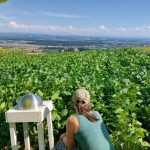Author: Anne Moïta, Global Bean PR at the Global Plot Berlin
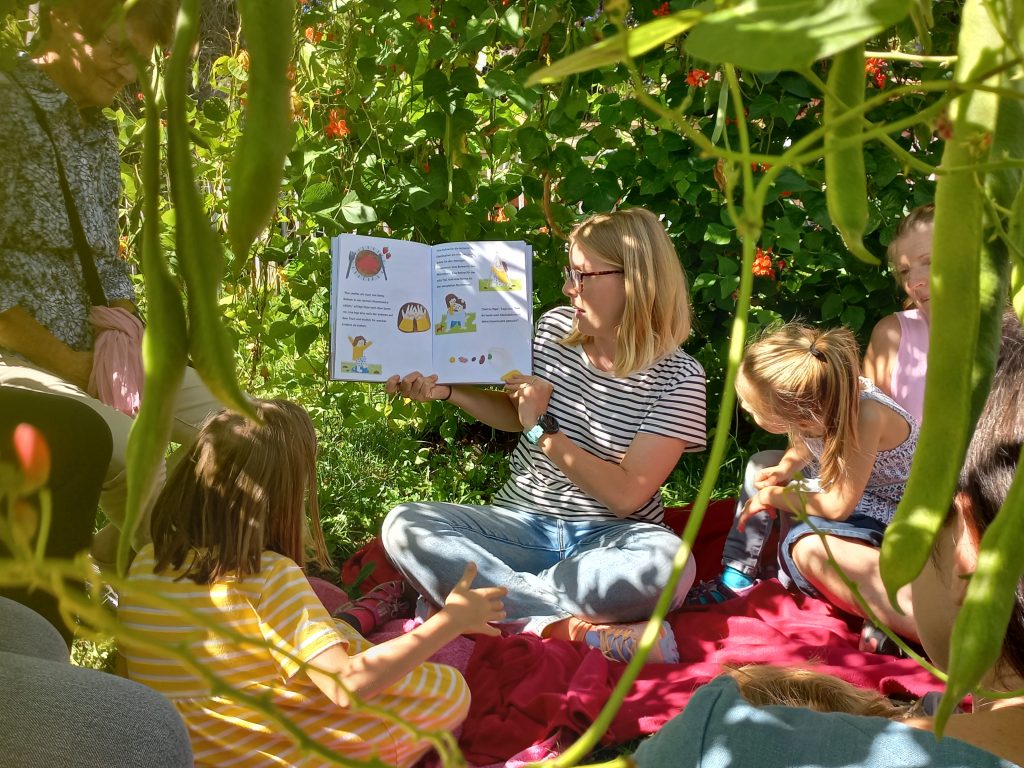
The concept of the Global Field is to grow on 2000 square meters the 45 more important arable crops of the world, among which the common bean, chickpeas, cowpeas, lentils, lupines, groundnuts, and soybeans as well as faba beans, commonly used for animal feed.
Following the Global Bean Project, the Global Field Attiswil made “beans” the seasonal theme on their Global Plot in 2022. In addition to the usual legumes of the Global Plot, more than 20 different bean varieties were shown in the bean strip.
So what exactly did they craft? Jasper from the Global Field Berlin – project that initiated the Global Bean – was able to visit Switzerland in November and see the various structures for himself, guided by Andrea from the Global Field Attiswil.
The bean teepee
The impressively tall “Bean teepee” is already enough to awaken curiosity. What is its purpose? What grows on it?
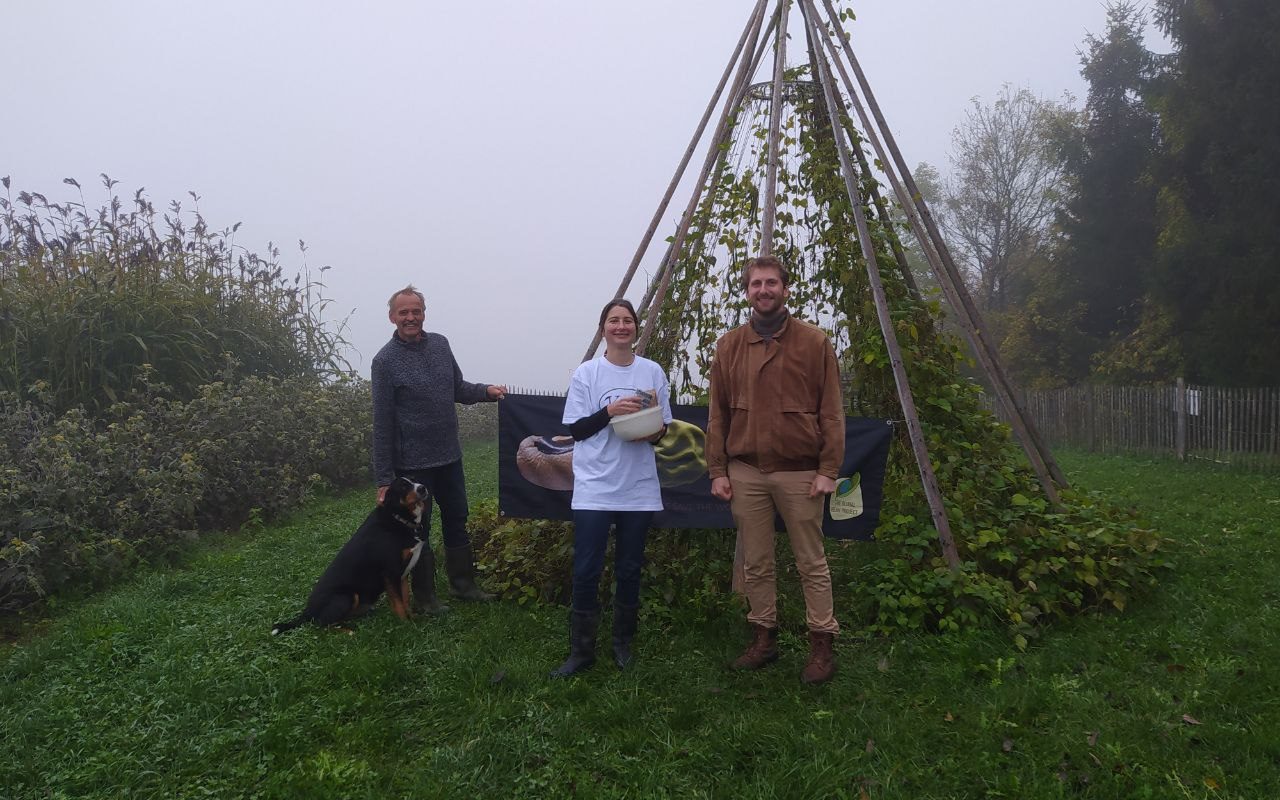
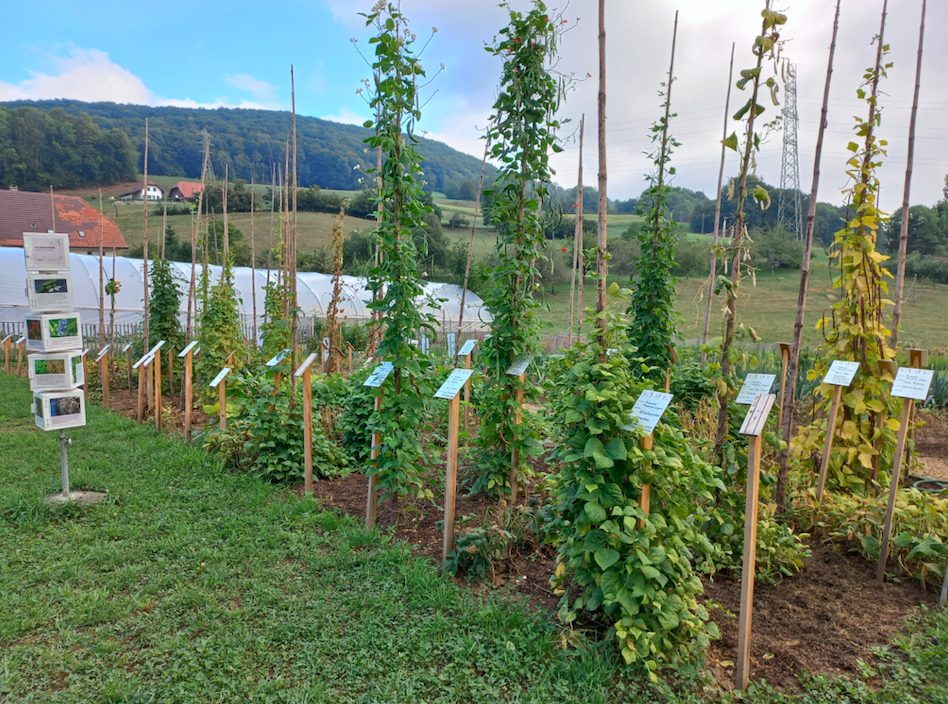
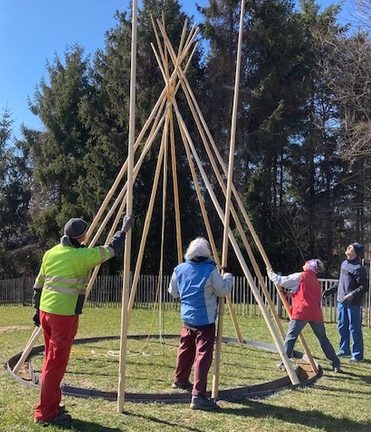
Scarlet runner beans grew on the bean teepee.
Of course, bean enthusiasts already know that climbing beans need support and can grow more than 2 meters high, but imagine how incredible it must be to discover it for the first time, for a group or school children for example!
It was especially heartwarming for us to see how the beans had grown from March – when the teepee was set up – to November during Jasper’s visit.
Let’s now move over to the legume area of the Attiswil Global field, with over 20 different legumes grown in a well-organized garden, with extra view on the sky and mountains.
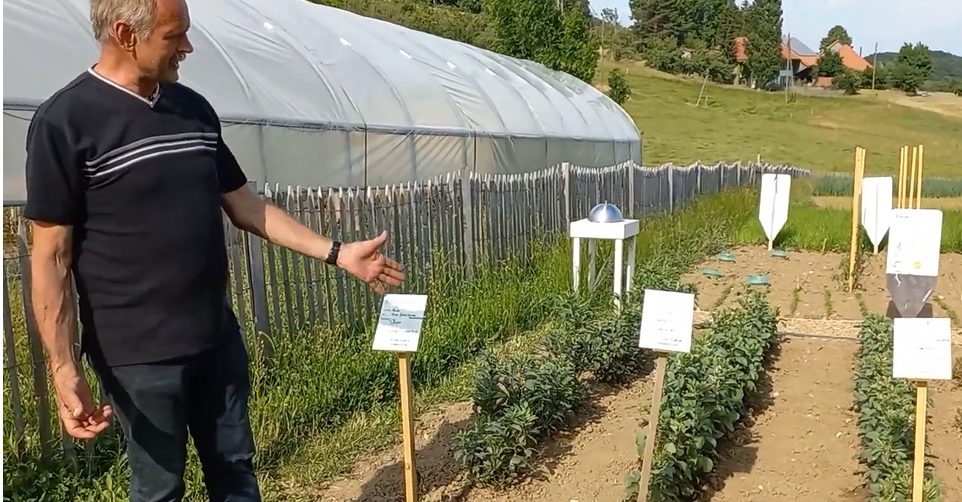
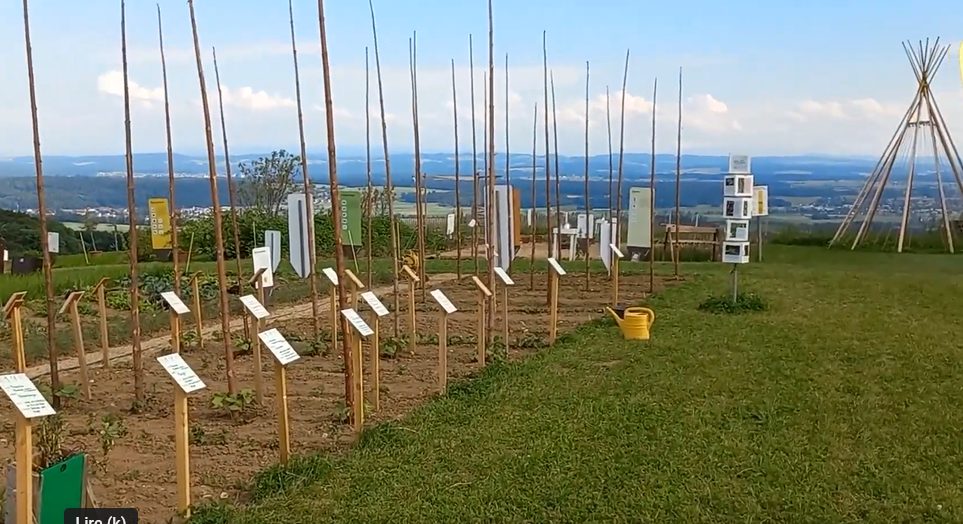
The bean tower
In the picture on the right above, between the climbing area and the bean teepee, one can see a quite intriguing and even artistic structure comprised of cubes stacked upon each other. Congratulations! You have found the Bean Tower.
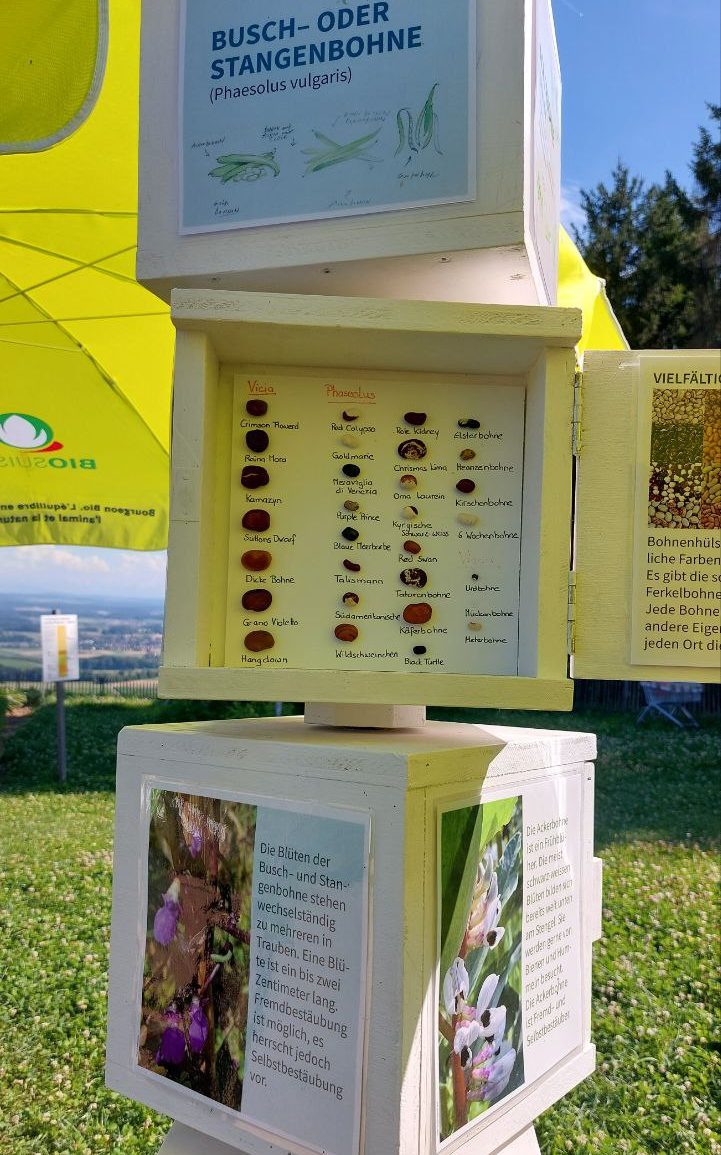
A closer look enables to discern that each facade of a cube is dedicated to a different legume: Glycine max (soy), Phaseolus vulgaris (common bean), Vicia faba (faba bean), and Phaseolus coccineus, the runner bean. Furthermore, each cube is dedicated to a different part of the legume plant, the seeds, flowers, pods and root system, and as they rotate, you would find yourself with a quite scrambled legume plant, reading “Phaseolus” but with scarlet runner bean flowers and faba bean pods.
Your first task would then be to rotate the cubes so that an entire facade of the tower – 4 stacked cubes – is about one legume and one legume only. Then you can start your discovery of that specific legume, or further explore the cubes…
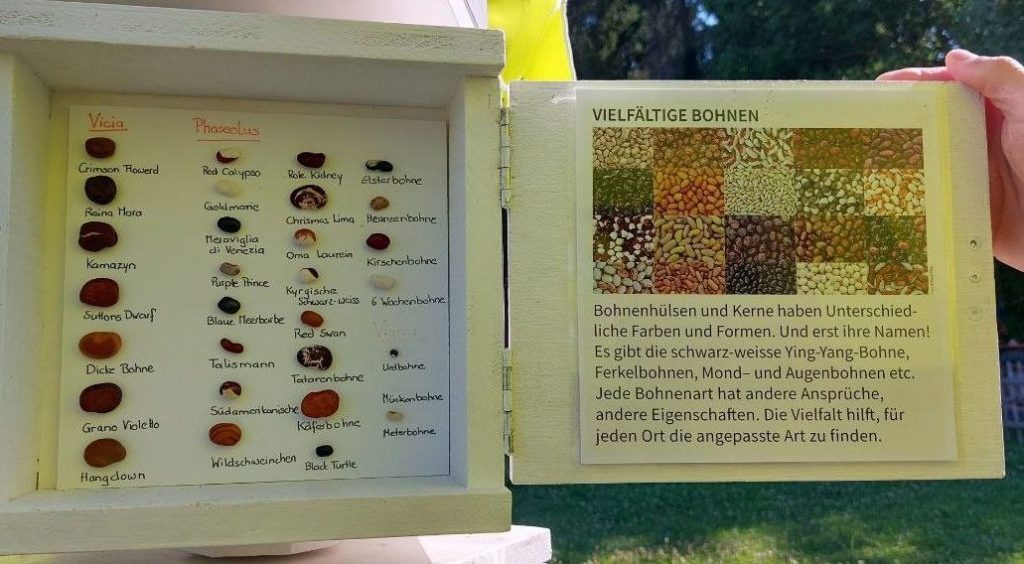
…as they can even be opened!
The bean area is presented in more detail in the Attiswil Global Bean Show garden video series.
Okay, I know what a legume is. What now?
Well, the bean tower isn’t all there is! After enabling visitors to discover more about the plant an itself, the Weltacker presents more information surrounding the hows and whys of their use, and their advantages.
If a visitor has seen legumes in the supermarket, or has decided to grow them in their garden on a whim and is now harvesting some, it might be interesting for them to know how to prepare legumes properly. Well, after reading the text on the panel below, they will know legume storage is environmentally friendly, and after placing the spatulas in the right order, here they go with knowledge about the steps of legume preparation.
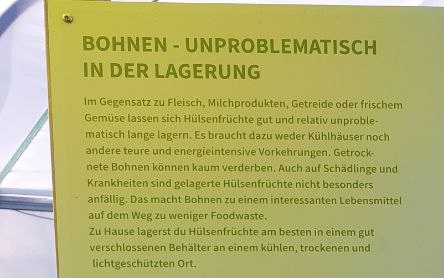
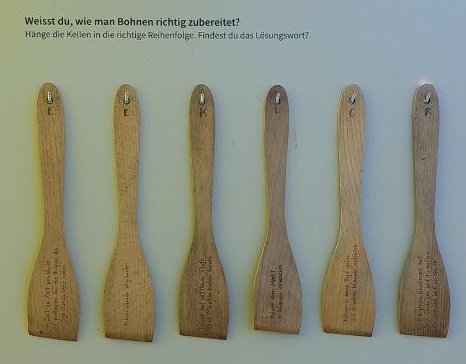
“Unlike meat, dairy products, grains or fresh vegetables, pulses can be stored well and relatively unproblematically for long periods”, is what the first sentence of the paragraph in the left picture reads. Soon, a translation in english for our international visitors?
Speaking of legume storage: Jasper’s visit in November was at the perfect time for the 2022 bean harvest on the Global Field Attiswil. He was therefore able to participate in removing the seeds from the pods and preparing them for storage along with Andrea.
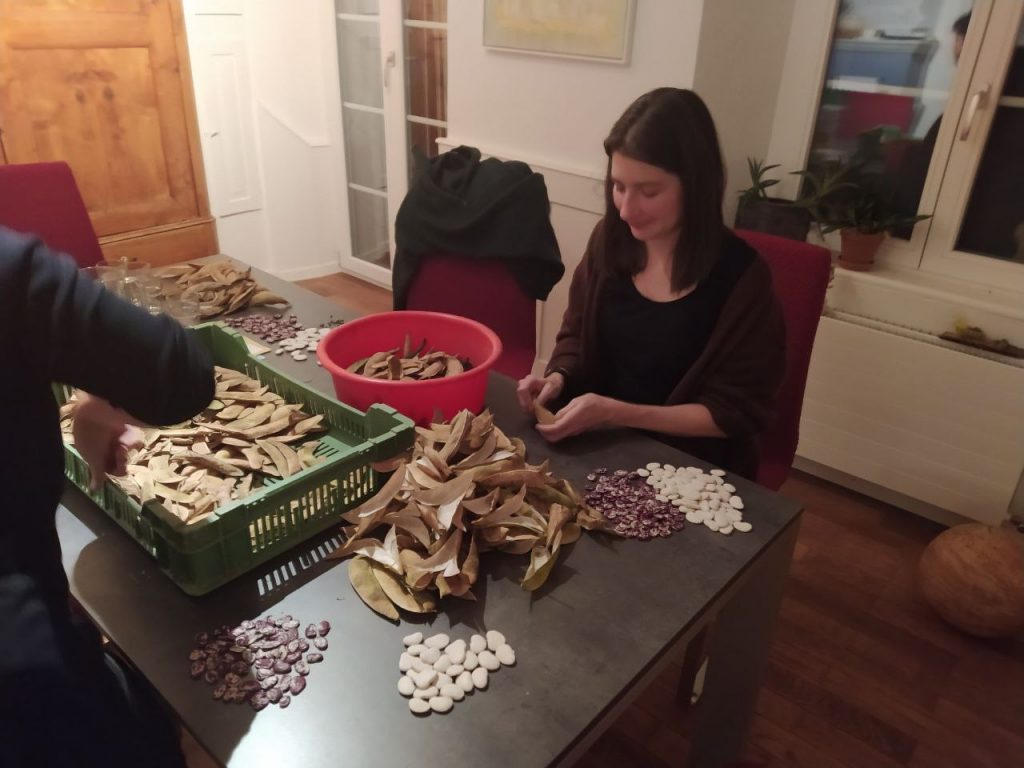
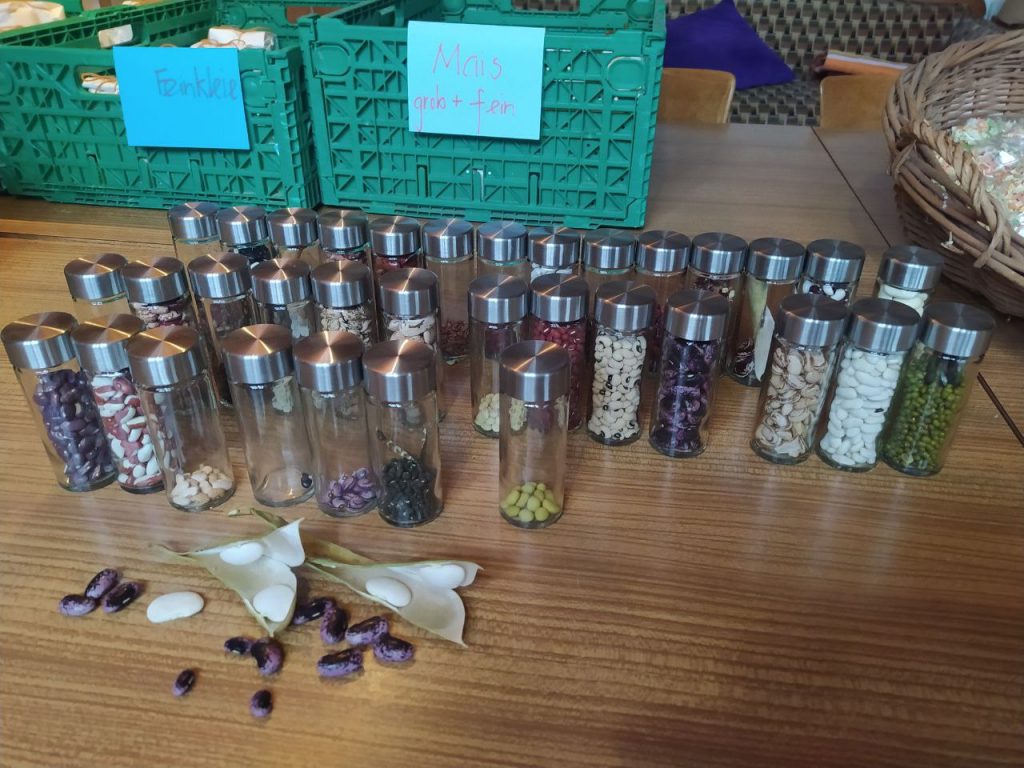
To get good seeds, wait until the pods are brown and brittle, and the seeds inside them rustle dry. Since the pods mature unevenly, a watchful eye is key.
translated from the Global Field Attiswil’s newletter
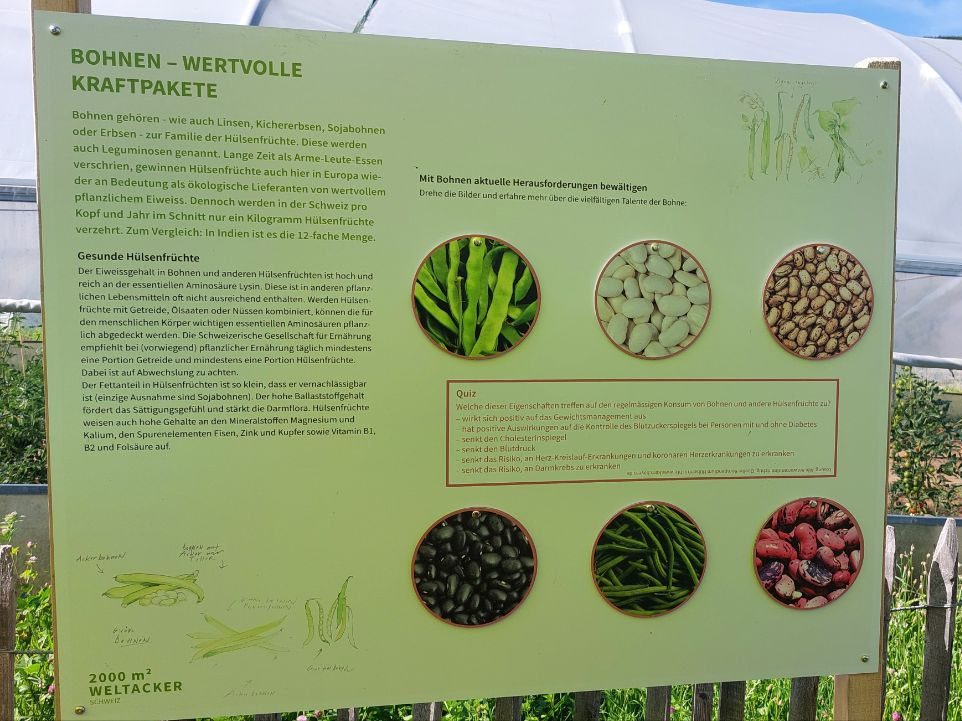
Now back to the information available to visitors. What would you do with legumes after storing and cooking them? Eat them of course, and the second panel tells you all about why that is an amazing idea, and how legumes are definitely an asset in your plate. Not only do they provide good plant protein, but also fiber and minerals that have positive associations with reduced cholesterol, blood sugar levels and other risk factors.
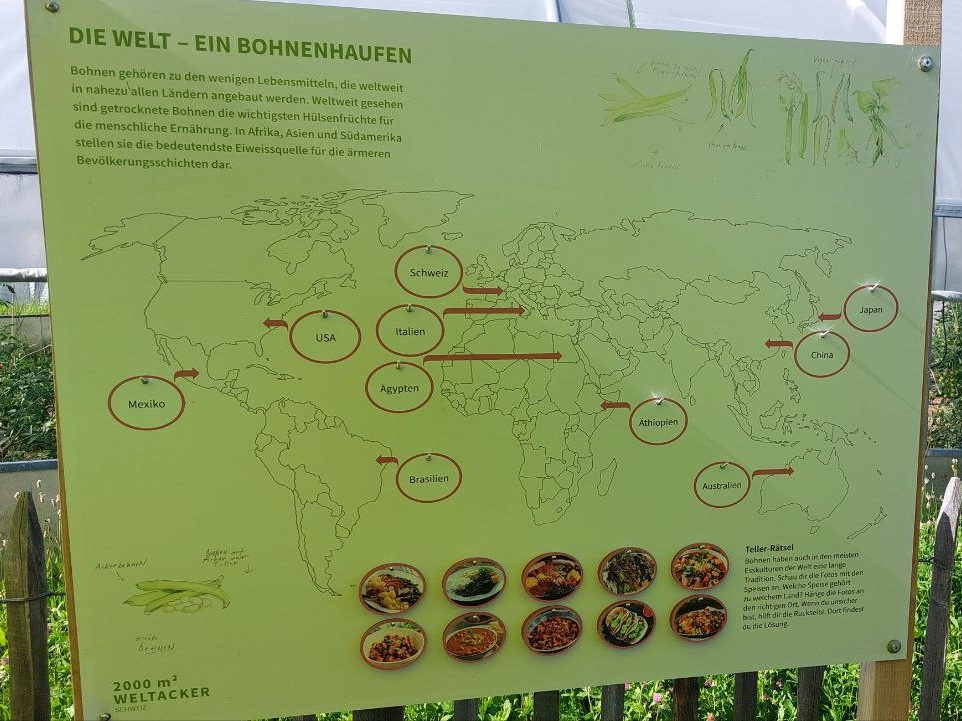
And you wouldn’t be alone in eating legumes either. There are various countries one can draw inispiration for dishes from. China, Japan, the USA, or perhaps you would prefer Ethiopian dishes? Then wou would first have to match the dish with the right country.
In conlusion:
2022 was a year with a strong focus on legumes for the Global Field Attiswil in Switzerland, and it shows! We can only applaud the team for their creativity in bringing this information to visitors of their Global Field, and surely… draw inspiration for more informative materials about legumes at the Global Field in Berlin?
Further resources
- Various legume recipes, garden tips, etc. available on their website “Aktion Bohnen”: https://weltacker-attiswil.ch/bohnen/
- Get in touch with Weltacker Attiswil if you are interested in replicating these bean installations!



